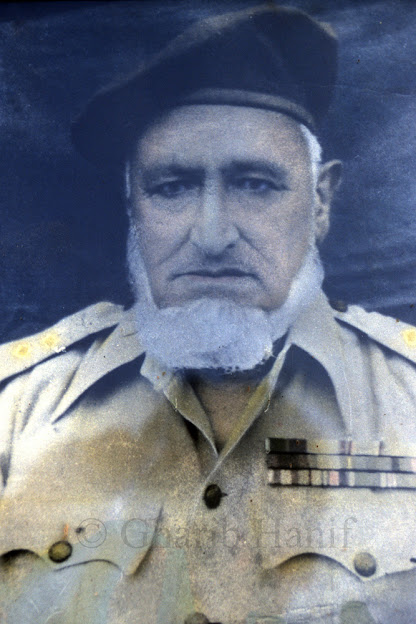Hast-o-Bood Part-28
Chapter IV
Historical background and brief overview of the state of Jammu and Kashmir
Maharaja Sri Sir GANGA SINGHJI Bahadu
A comfortable and scenic route leads from Rawalpindi to Kashmir. Thirteen miles from Rawalpindi to Bhara Kahu, twelve miles from Bhara Kahu to Trit, thirteen and a half miles from Trit to Koh Meri Sunni Bank, fourteen miles from Sunny Bank to Pahguari, fourteen and a half miles from Bhagwari to Kohala, twelve miles from Kohala to Dulai, two miles from Dulai, two miles. Fourteen miles from Garhi, thirty-two miles from Garhi to Chakoti, thirteen miles from Chakhoti to Ori, thirteen and a half miles from Ori to Rampur, fourteen miles from Rampur to Baramulla, seventeen miles from Baramulla to Patan, and seventeen miles from Patan to Srinagar.
The history of the Mangral nation is shrouded in the blur of the past and the dust of time. The successive rulers of this nation, like other former heads of state, chose the best storytellers of the state and members of the hereditary nation to protect the genealogy of their elders. In addition to memorizing the genealogy of the nation, they kept important evidence in their chests in the form of books. At the top of these are Rai Qadir Marathi and Rai Dinu Marathi [1] who were granted lands by the Mangral kings and after whom their descendants have memorized the genealogies of the ancient Mangral rulers and various incidents. And they still occupy the estates acquired by their grandfathers. Raja Muhammad Yaqoob Tariq, Mirpur District Inspector of Schools, who is a retired member of Mouza Lahri, got information about Sahib Din from a member of the same hereditary family in the year 1955. He published an article titled "Wadi Sahansa Tehsil Kotli Tehsil Mirpur" in the monthly Nizam Taleemat Sialkot issue November 1955 AD. Which sheds a lot of light on the history of Mangaral. The author also visited Mirpur, Gulpur, Kotli Mangaralan and after verification and research in this regard from various personalities and dignitaries of the Mangaral nation has been able to repeat the following facts. Major Alif Khan Sahib, resident of Mirpur, Raja Muhammad Siddique Khan Advocate Mirpur, Col. Raja Muhammad Mahmood Khan resident of Khatkali adjoining Gulpur Lieutenant Colonel Raja Muhammad Sarwar Sahib are worth mentioning.
According to the source mentioned above, the Mangral nation originated from the name of its heir, Raja Mangarpal. The lineage of his ancestors goes back to Raja Ram Chandra Ji of the Chandra Bansi family of Ajudhya, India. A battle with the family of Raja Harish Chandra of this family, the expedition which reached the brave Raja Bikaner (India) and became its ruler. His successors ruled Bikaner for five generations.
The last king had two sons, Nirmal Dev and Hafi Dev. Nirmal Deo remained attached to the state of Bikaner but his real brother Hafi Deo reached Sialkot (present-day Pakistan) in the twelfth century AD. Here she gave birth to a son named Mangarpal. This prince was smart from the beginning, possessed of strong power and present mind. As soon as he reached Fawan-e-Shabab, he mastered the art of warfare, highlighting his defensive skills. Saying goodbye to Sialkot on the death of his father Hafi Dev, he along with his companions got up to try his luck in Rajouri area of Jammu state. Here his only son, a Hindu deity, was born. Raja Mangarpal was equally popular among his strangers due to his various qualities of courage and masculinity, understanding of matters, understanding and administrative abilities. The presence of Mangral Rajputs in both Hindu and Muslim nations in Rajouri is an indication that Raja Mangarpal was definitely a Sahib Iqbal personality in his time in this part of the state and although his only son is a Hindu deity. Her offspring may have more than one offspring, but our narrator's legacy may have intentionally or unintentionally left out, referring to others as unknown.
However, Raja Mangarpal's grandson Raja Sahans Pal migrated from Rajouri in the early thirteenth century AD to Mouza Malout in Kotli Tehsil, Mirpur District, Jammu State. He stayed here with his companions for some time and joined some Jamiat. When he gained the favor of the people, his mercurial and adventurous nature encouraged him to move forward, and according to Iqbal.
Don't be satisfied with the color and smell of the world
There are lawn and other ashes
He settled Mouza Kohra, adjacent to Mouza Chochh, at the foot of the northwestern hill from Mouza Mulut, and settled the tribe of Mangral as a tribe along with his companions. The ruins and relics of this ancient settlement are still spoken in tongues.
Someone once went that route
Adjacent to this settlement and area, the area between Gulpur, Tharuchi and Atkora was ruled by the Hindu Bhats, or Mehtars, now called the Sahansa Valley. The area was given to Hindu Mehtars by the Ghakhar chiefs as a jagir in return for service. When these Hindu Mehtars came to know that a Raja of the upper Hindu caste adjoining their jagir had settled in the company of their companions, they attended the service of Raja Sahanspal in their traditional manner and played the Cornish. At the same time, it was agreed that they should be given a rickshaw and their present and future troubles should be cured and they should be brought to the advanced age.
to be continued .....
[1] ... Wadi Sahansa Tehsil Kotli, Article by Raja Muhammad Yaqub Khan, District Inspector of Schools, Mirpur Monthly "Nizam-e-Taleem" Sialkot Published November 1955
Note: Blogger does not necessarily agree with the text of the book.



Comments
Post a Comment